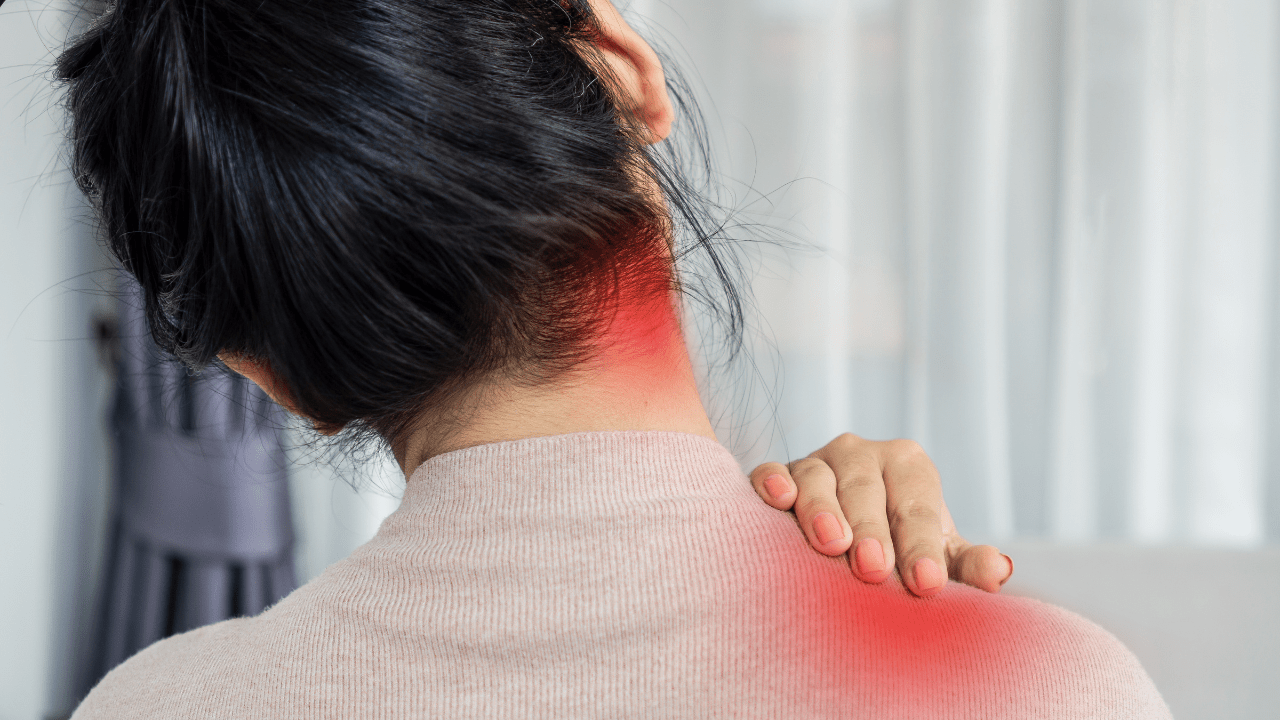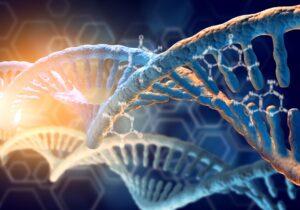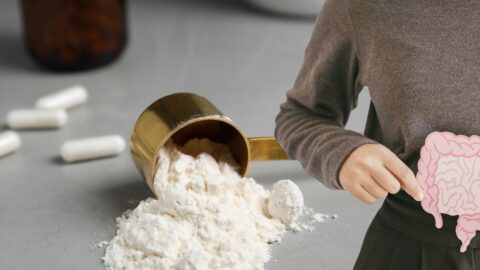Living with Chronic Pain
by Vanita Dahia
Pain is multi-faceted – the experience of pain is unique for each person often dependant on several factors. Pain can result from physical, psychological, auto-immune, cognitive, cultural, environmental and genetic factors which sends signals to the brain that something is wrong obstructing the natural flow of blood, oxygen and energy in the body.
Pain is a signal that your body needs medical / physical / spiritual or emotional help and attention.
Chronic pain had a peripheral and a central element. People suffering with chronic pain have adapted to processing pain and have become hyper-responsive to painful stimuli.
Pay attention to the Energy of Pain
Ignoring pain or over-expression of pain can further exacerbate the perception of pain threshold, intensity, duration and frequency of the episode. Pain ebbs and flows – it never is the same all the time!
The body uses all the nutrient reserve to cope with pain. Over time, the immune systems become drained from having to carry all past and present stressors, conflicts, hurts, guilt, and challenges of life. A compromised immune system opens the opportunity for microbes in the gut to become pathogenic and throw the homoeostasis of microbiota out of balance making the system more vulnerable to illness.
What causes Pain?
The most obvious pain is that of an injury like stumping your toe or healing from a broken bone. Emotional pain may manifest in physical pain and is often long-lasting till energy blocks have been addressed. Pain can be caused by:
- Injury
- Trauma e.g. osteoarthristis (OA), back pain
- Surgery
- Inflammation
- Infection
- Medication
- Chemical exposure
- Diseases e.g. ankylosing spondylitis, arthritis
- Psychological or emotional
What type of pain are you?
Acute pain can often be managed with pain medication for a short term. When pain is chronic, persistent, real unremitting and demoralising, it manifests as a continued state of suffering, discomfort, insomnia and sadness.
Pain can be classified into various types from a neurobiological perspective. Pain can be classified into:
Nociceptive pain (Somatic/Visceral)
Nociceptive pain is mediated at nociceptors widely distributed in cutaneous tissue, bone, muscle, connective tissue, vessels, and viscera. This pain results from mechanical, thermal, or chemical excitation or trauma to tissue. This kind of pain is part of our intrinsic physiological protective system to help detect and minimise contact with damaging stimuli like touching a hot iron. The natural protective reaction demands immediate action like retracting from the hot iron immediately.
Pain is described as dull, aching throbbing like joint pain, sometimes sharp.
Neuropathic pain
Neuropathic pain typically known as “nerve pain” expressed as tingling, burning, hypersensitivity to touch, or numbness commonly arises from damage to nerves, spinal cord and brain.
Neuropathic pain is described as phantom limb pain or diabetic neuropathy.
Neuropathic pain can wear many faces:
- Peripheral or multifocal is inflammatory, traumatic and ischaemic
- Generalised neuropathy is inflammatory, genetic or toxic
- Central nervous system (CNS) lesions e.g. stroke, MS
- Complex neuropathy also known as complex regional pain syndromes
- Anticonvulsants
- Neural blockade drugs
- Tricyclic antidepressants
- Topical neuropathic pain applications of ketamine, gabapentin, alpha blockers, etc
Inflammatory Pain
Arthritic pain or back pain can typically be inflammatory in nature as it stimulates production of pro-inflammatory cytokines, chemokines, reactive oxygen species (ROS), vasoactive amines, lipids, ATP, acids, release of other leukocyte induced factors, vascular endothelial cells and tissue-resident mast cells.
Essential fatty acids or the good oils like fish oils may be classified into pro-inflammatory Prostaglandins and leukotrienes, synthesised from arachidonic acid (AA) are potent mediators of inflammation. Inflammatory pain is adaptive and protective as it heightens sensory nociceptor sensitivity after tissue damage, and assists in the healing the injury. PMS, rheumatic arthritis or osteoarthritis are examples of types of inflammatory pain.
Management of Pain
The cure to pain or the ideal diet for weight loss has the potential to be revolutionized with new inventions. As perception of pain varies, so does the response to pain relief. Addictions or dependence on pain medication especially opioids and drugs of addiction like cannabis for pain management directly affects neuronal perception and response to medications.
Pain may be mediated by a number of pathways. Mush research has been done on glutamate mediation affecting substance P, and other neurotransmitters interacting with postsynaptic NMDA gated receptors. Glutamate antagonists both prescription and natural are used extensively as a mechanism where traditional pain medication are not effective.
Diet
We are what we eat. Opinions may vary from high protein low carb diet to a diet rich in antioxidants. The principles of a diet should aim to activate the body’s endogenous opioid system.
Essential fatty acids or the good oils like fish oils may be classified into pro-inflammatory Prostaglandins and leukotrienes, synthesised from arachidonic acid (AA) are potent mediators of inflammation. Inflammatory pain is adaptive and protective as it heightens sensory nociceptor sensitivity after tissue damage, and assists in the healing the injury. PMS, rheumatic arthritis or osteoarthritis are examples of types of inflammatory pain.
Categories of pain management
According to the World Health Organization’s (WHO) \”analgesic ladder\”, opioids are not recommended for chronic pain unless the pain can be described as moderate to severe, and/or has not responded to previous (non-opioid) treatment approaches.
The Opioid Dilemma
Opioid use has been curtailed and controlled within the last 5 years due to over use and addiction of these medications.
Paracetamol is the most widely used analgesic but can be extremely dangerous if used inappariately. Doses in excess of 4g per day contributes to liver toxicity
NSAID’s is associated with adverse effects such as gastrointestinal bleeding, peptic ulcer disease, high blood pressure, oedema.
Aspirin is used in low doses as a blood thinner in cardiovascular protection and stroke prevention.
Excessive use of aspirin can trigger bleeding. All prescription medications have an array of side effects.
Drugs such as antidepressants and antiepileptics can complement traditional anti-inflammatory drugs by modulating central biochemistry.
Opioid use comes with side effects of:
- Constipation
- Nausea
- Excessive sleepiness
- Itchiness (i.e. pruritus)
- Headache
- Respiratory distress
Prescription medication for pain is classified into:
- Gentle pain killers e.g. paracetamol, aspirin
- Neural Blockade
- Narcotic agents or mind to stronger pain killers e.g. codeine, opioids like morphine, oxycodone
- CBD, THC
- Corticosteroids
- NSAIDS provide transient pain relief. Approximately 30% of peptic ulcer disease cases in the elderly (>65) can be attributed to NSAID use.
- Newer generation COX-2-inhibitors like Mobic and celebrex
- salicylates
- local and IV anaesthetics
- Antidepressants (tricyclics and serotonin-noradrenaline reuptake inhibitors [SNRIs])
- Antiepileptic drugs (gabapentin, pregabalin, and other anticonvulsants)
- Hyaluronic acid, a component of synovial fluid may restore lubrication to the joints. Hyalunoric acid may either be injected into the synovial fluid or taken orally.
- Muscle relaxants
Physical and Energy Therapies
The relief and power of touch plays such a major role in pain management. Movement based activities, including stretching and range of motion exercises including specific strengthening exercises should be adjustive to medication management of pain.
The plethora of services available are expanding as it becomes available and has shown to be beneficial. Some therapies may include:
- Somatic pain relief can be achieved through hot and cold packs
- Electrical stimulation such as a TENS machine
- Pulse electromagnetic field therapy
- Dry needling, acupuncture, cupping, moxibustion
- Visceral Pain relief
- Physical Therapies like massage, myotherapy, chiropractic
- Tactile stimulation
- Integrative Manual Therapy (IMT)
- Micro-Vibration Therapy (MVT)
- Shiatsu massage
- Remedial massage
- Meditation
- Qi Gong
- Tai Chi
Physical and energy therapies are beneficial as an adjunct to conventional medications.
Physical therapies used for pain management include:
- Chiropractic
- Osteopathy
- Acupuncture
- Myotherapy
The principles of energy therapy is to align energies, improve voltage and optimise cellular function.
Cellular Malfunction
Loss of power to cells presents as malfunction of cells or loss of voltage to cells. The cell membrane provides electrons to maintain cellular function. When the voltage is depleted, cellular function is also depleted, less electrons are available for cellular communication. This leads to decreased communication and voltage to each cell and greater resistance inside the cells. Chronic disease is in actual fact, an electronegative state. An electronegative state slows down healing.
Healing is creating an electropositive state to restore oxygen supply and healing to cells. This can be achieved by:
- Drinking alkaline water
- Use MVT to supply electrons to the cell membrane, ATP to mitochondria and restore normal polarity
- Electronic Devices to restore the Polarity of cells with:
- Light
- Sound Acoustic/Sound Micro Vibration
- Light Micro Vibration
- Photonic Cellular
- Energy clearing or balancing like pranic healing
- Emotional freedom technique
There are many energy therapies used in various ways. One such technique is Emotional Freedom Technique.
Emotional Freedom Technique (EFT)
EFT is a powerful tapping-based technique to help people reduce the duration and severity of symptoms by collapsing emotional contributors.
EFT is extremely helpful when you need to “unpack” the old traumas and hurts from the past so the energy can be used for healing rather than dealing with unresolved emotional pain. We often are too busy to deal with pain or ignore pain – we need to take care of old conflicts. Instead, pain starts to “speak” to us louder and louder with greater intensity of pain.
Natural Medication for Pain Management
Herbal medicine has been shown in the literature to be effective in managing pain. The discovery of turmeric, an Indian spice has been used for centuries in India now is considered as a profound pain killer with few, if any side effects. Likewise, others herbs showing promise in pain management are:
Baical skullcap and Acacia catechu are TCM herbs has anti-inflammatory effects by inhibiting COX-2 and LOX to reduce the production of pro-inflammatory eicosanoids and modulate pro-inflammatory cytokines such as TNF-alpha, interleukin (IL)-beta, IL-6 and down regulate NFkB. (1)
White willow converts to salicylic acid and performs its pain killing effects by inhibiting COX-1/ COX-2 and LOX, suppressing prostaglandin E2 and leukotriene release, and modulates pro-inflammatory cytokines such as IL-1,IL-6,IL-8,IL-10, TNF-alpha and NFkB.(2)
Kava is a anxiolytic assisting in managing symptoms associated with pain like sleep-in difficulties, depression, anxiety and mood disorders by its action on the GABAminergic neurons.
Corydalis, a TCM herb, has traditionally being used in dysmenorrhea. Its pain killing property is attributed to its sedative, tranquilising effects associated with tyrosine metabolism which influences Dopaminergic neurons.
Jamaican Dogwood has antispasmodic activity and has been used to aid menorrhagia and heavy bleeding.(3)
Ginger are inhibitors of COX -1 and COX-2 pathways. In a study by Ozgoli and his team, 250mg of Ginger has been shown to be as effective as 250mg of mefenamic acid and 400mg of ibuprofen in relieving the pain of primary dysmenorrhoea. (4)
Magnolia has been used traditional for insomnia and relieve anxiety. It does this by activating certain GABA receptors, and may also interact with receptors for glutamate, dopamine, and serotonin, and influence acetylcholine signalling.
Black Cohosh has been shown to relive pain especially in dysmenorrhea. The vasorelaxation due to the blocking of calcium channels, suggesting possible benefit for vascular conditions, as well as anti-inflammatory activity via the inhibition of IL-6 and TNF-alpha.
A combination of Boswellia from Indian Frankincense and Curcumin from Turmeric showed significant increase in pain threshold and WOMAC joint pain index scores vs placebo. (6)
Californian Poppy, Pukatea, and Rosehip are indicated for inflammation, analgesia, pain and anti-oxidant.
Herbs that provide pain relief, also known as anodynes which have an affinity for the nervous system include Baical Skullcap, Californian Poppy, Cordyceps, Corydalis, Cramp Bark, Devil’s Claw, Ginger, Greater Galangal, Jamaican Dogwood, Japanese Knotweed, Kudzu, Turmeric, and Willow Bark.
Herbs proven to be better than Prescription Pain Medication
Boswellia assists in prevention of cartilage breakdown by decreasing glycosaminoglycan levels needed for cartilage repair. Non- steroidal anti-inflammatories (NSAIDS) also reduce glycosaminoglycan levels but speed up cartilage damage. Boswellia does not accelerate cartiage damage.(7)
A Combination of Boswellia and Curcumin was found to be more effective than COX-2 inhibitors in osteoarthritis and relief of symptoms particularly pain, walking distance and joint tenderness. COX-2 inhibitors are new generation anti-inflammatories like Celecoxib or Meloxicam.
In a study by Kizhakkedath and team, 92.85% of patients treated with a combination of curcumin and Boswellia demonstrated an improvement or had no joint tenderness compared with 78.57% of patients given the COX-2 inhibitor. (8)
In a study of rheumatoid arthritis patients, Turmeric either alone or with diclofenac, a commonly used NASAID, showed that turmeric was superior to diclofenac in reducing RA symptoms. (9)
The Power of PEA
Palmitoylethanolamide (PEA) is a lipid compound that occurs naturally in tissues throughout the body, including the central nervous system. PEA is an endogenously produced cannabimimetic extensively studied in pain, inflammation and nerve conditions. It can also be found in foods such as soy lecithin, egg yolk, and peanuts.
PEA exerts its analgesic effects via a number of mechanisms which include modulation of mast cells, transcription factors, pain sensitisation, cannabinoid receptors and neuroprotective mechanisms.
A growing body of research suggests PEA supplementation may be effective for relieving pain from a variety of causes without triggering adverse side effects. PEA is produced by microglia and mast cells and it down-modulates mast cell activation and controls microglial cell behaviour. 600mg of PEA taken over 4 weeks has been shown to provide pain relief by reducing pain score with no adverse effects. (5)
PEA’s ability to inhibit mast cell activation has opened the door to further study in the use of PEA for neuropathic pain. It is particularly effective in trapped nerve pain such as sciatica ad carpel tunnel syndrome.
DL-Phenylalanine
D-phenylalanine (DPA), an amino acid, inhibits the action of an enzyme that breaks down endorphins and enkephalins. These are proteins that bind to opioid receptor sites in the brain, thereby influencing the perception of discomfort. By obstructing the action of this enzyme, DPA may extend the life of endorphins and enkephalins and their positive influence on comfort levels. L-Phenylalanine is the precursor to two neurotransmitters that help support an alert state.
Compounding your unique Pain Management Therapy
Tailoring your Pain Management Plan for you
We understand your pain. There is enough evidence to show that although pharmaceutical pain medication is useful, it also comes with side effects, adverse reactions and addictions. This is why pain sufferers seek alternate options which often do not interact with prescriptions drugs. Do not use supplements without consulting with your health care practitioner as herbs are effective therapeutic substances which has the potential to interact with drugs or potentiate the effect of drugs.
Herbs are custom compounded for your pain with our huge database of herbs and studies associated with it. We know how to synergistically blend your herbs to suit your type of pain.
Custom compounded Amino Acids
Pain comes with inflammation, cartilaginous breakdown and mood changes. Amino Acids can be compounded for you based on your type of pain and associated symptoms. Typically, I would combine PEA with DL-phenylalanine and a blend of amino acids to suit your analysis.
We identify the underlying causative factors and drivers of pain in line with managemnt of pain.
If hormonal fluctuations is causing pain, we will balance hormones together with addressing the pain.
Of course, I have just touched on some solutions to pain management. Homoeopathic medications work for some and are worth considering if the constitution allows for it.
Educational Webinar
Pain Pain Go Away
In this webinar, you will learn:
- types of pain
- measuring pain
- devices used for pain management
- Pharmaceutical and natural pain management therapies
References
- Burnett BP, Jia Q, Zhao Y, et al. A medicinal extract of Scutellaria baicalensis and Acacia catechu acts as a dual inhibitor of cyclooxygenase and 5-lipoxygenase to reduce inflammation. J Med Food 2007;10(3):442-451.
- Braun L, Cohen M. Herbs & natural supplements- an evidence- based guide, 4th ed. Chatswood: Elsevier Australia,2015.
- Costello CH, Butler CL. An investigation of Piscidia erythrina (Jamaica dogwood). J Am Pharm Assoc Am Pharm Assoc 1948;37(3):89-97.
- Ozgoli G, Goli M, Moattar F. Comparison of effects of ginger, mefenamic acid, and ibuprofen on pain in women with primary dysmenorrhea. J Altern Complement Med 2009;15(2):129-132
- Gatti A, Lazzari M, Gianfelice V, Di Paolo A, Sabato E, Sabato AF.Palmitoylethanolamide in the treatment of chronic pain caused by different etiopathogenesis. Pain Med 2012;13(9):1121-30.
- Armine Haroyan et al, Efficacy and safety of curcumin and its combination with Boswellia in osteoarthritis, BMC Complementary and Alternative Medicine
- Hauser R. The acceleration or articular cartilage degeneration in osteoarthritis by non-steroidal anti-inflammatory drugs. Journal of Prolotherapy. 2010;(2)1:305-322.
- Kizhakkedath R. Clinical evaluation of a formulation containing Curcuma longa and Boswellia serrata extracts in the management of knee osteoarthritis. Molecular Medicine Reports. 2013;8:1542-1548.
- Chandran B, Goel A. A randomised pilot study to assess the efficacy and safety of curcumin in patients with active rheumatoid arthritis. Phytotherapy Research. 2012;26(11):1719-1725.




